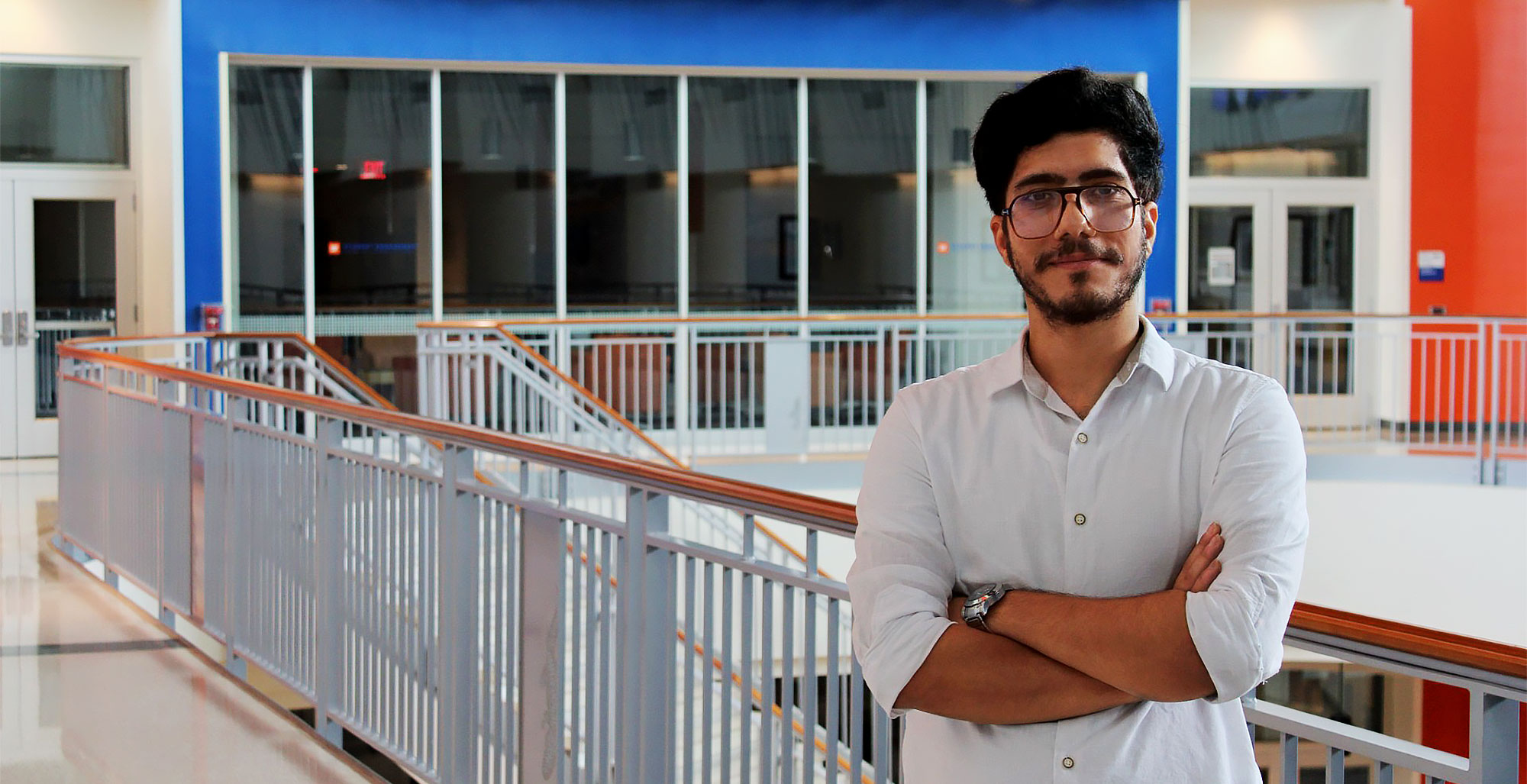Name: Amirreza Saffarian
Major: Ph.D. Student, Industrial and Systems Engineering
Advisor: Jorge A. Sefair, Ph.D.
When Amirreza Saffarian isn’t developing mathematical models to protect endangered species or solving complex optimization problems, you might find him hiking a nature trail, playing soccer or exploring new cultures through travel.
Originally from Iran, Saffarian is a Ph.D. student in Industrial and Systems Engineering working under associate professor Jorge A. Sefair, Ph.D. Now finishing his second year, Saffarian is already making an impact on developing optimization models and algorithms for spatial conservation planning.
“My research focuses on using mathematical modeling to support biodiversity conservation by translating ecological needs into quantitative language, particularly in the design of wildlife corridors and reserves. I’m especially interested in developing algorithms that can effectively solve large-scale, real-world problems,” said Saffarian.
His academic path began in Iran, where he earned his bachelor’s and master’s degrees in industrial engineering and operations research from Sharif University. A growing passion in optimization modeling was sparked by his dissertation. A pivotal conversation during his Ph.D. interview with Sefair sparked his interest in applying operations research to environmental challenges. This discussion led to his exploration of how operations research could be applied to real-world environmental challenges, ultimately leading him to pursue a Ph.D.
Since coming to UF, Saffarian has earned notable recognition, including the Harbert S. Gregory Fellowship for first-year Ph.D. students in 2023. In 2021, he was a gold medalist at the 26th national Olympiad in Industrial Engineering, earning the highest honor awarded in the competition.
His research focuses on real-world applications of optimization modeling to support biodiversity in Gainesville, where he’s working on a high-impact conservation project involving native species like the Florida panther.
“I’ve always had a deep appreciation for nature, so working on algorithms that support biodiversity feels especially meaningful to me,” said Saffarian.
He’s taken on multiple leadership roles within the College of Engineering. He’s currently the treasurer of the ISE Graduate Student organization, a liaison for the INFORMS student chapter and represents ISE on the graduate student council.
“These roles have helped me develop leadership skills while supporting student engagement, representing departmental interests, and giving back to the academic community,” he said.
Saffarian’s faculty advisor, Jorge A. Sefair, Ph.D., praised Saffarian’s commitment to service.
“He’s one of the leaders of ISE’s graduate student organization, which supports all the graduate students in our department. It’s not part of his research — it’s something he chooses to do because he wants graduate students to be heard and to feel part of a community. Plus, participation in the organization makes students eligible for travel grants,” Sefair said.
Here’s more about one of ISE’s leading Ph.D. candidates:
What inspired your interest in conservation planning?
My goal is to provide decision-makers with practical tools to prioritize ecological goals while accounting for constraints such as land availability and cost. My interest in conservation planning emerged from how technical disciplines can contribute to solving pressing environmental problems.
How do you see your work making a broader societal impact?
My work contributes to real-world conservation by providing tools to protect critical species that sustain ecosystem balance and food chains. As natural systems continue to demonstrate their importance to human well-being and the economy through services such as clean water, climate regulation and agricultural stability, integrating ecological priorities into land-use decisions becomes increasingly vital.
What was your experience when developing algorithms for wildlife corridors?
This work gives me the unique opportunity to merge optimization methods with environmental conservation, two areas that matter greatly to me. Knowing that my technical work could help protect endangered species gives it a real sense of purpose and impact.
Are there any projects you’re especially proud of?
In our latest research, we’re conducting a case study on wildlife-corridor design to support the conservation of native species in Florida, specifically designing extensions to the Florida Wildlife Corridor. Our work combines real ecological data with optimization techniques, aiming to provide practical guidance for land-use planning and species protection.
What do you like to do outside of work?
I enjoy hiking and photography, as well as playing soccer, video games, watching movies and TV series, and exploring new cultures through travel.

